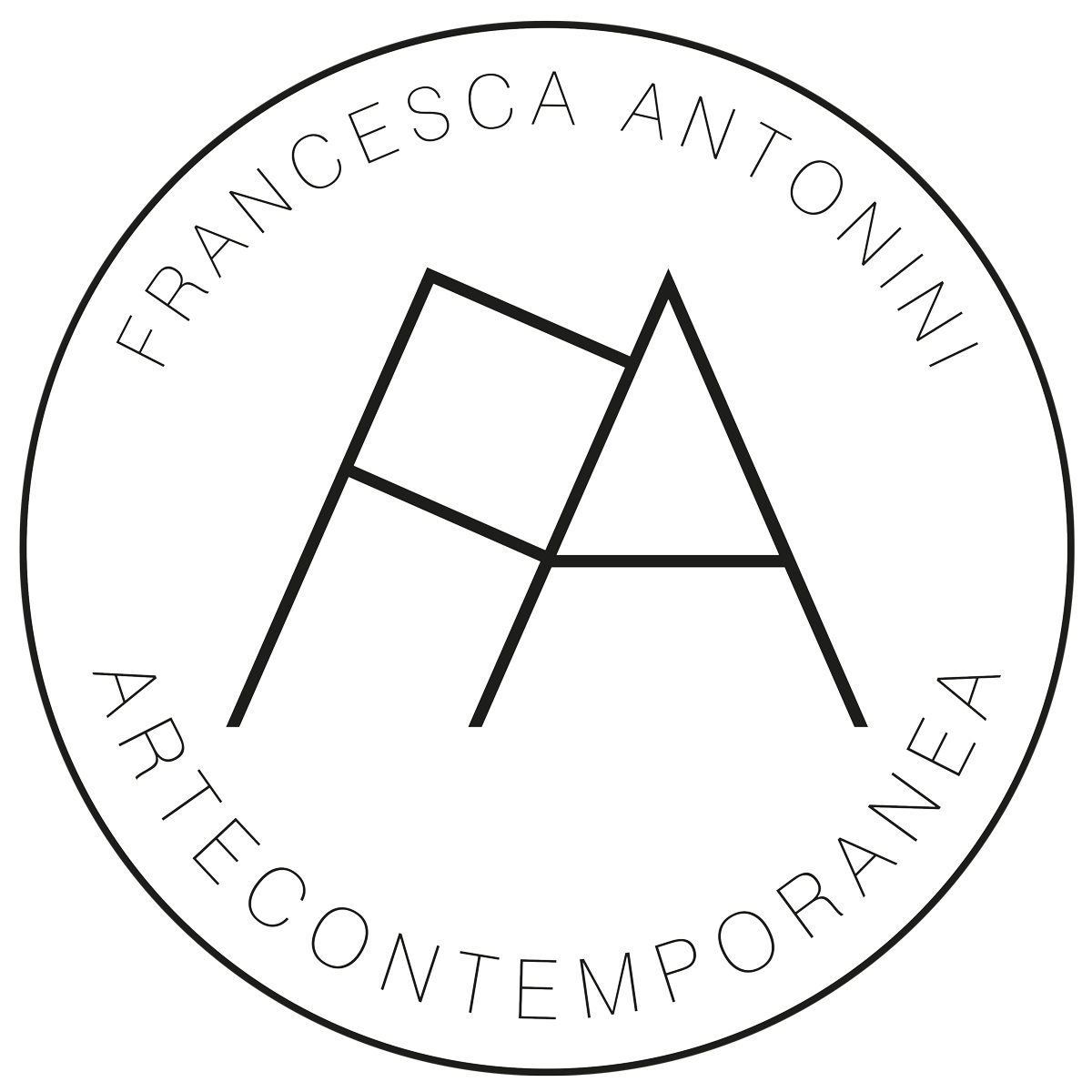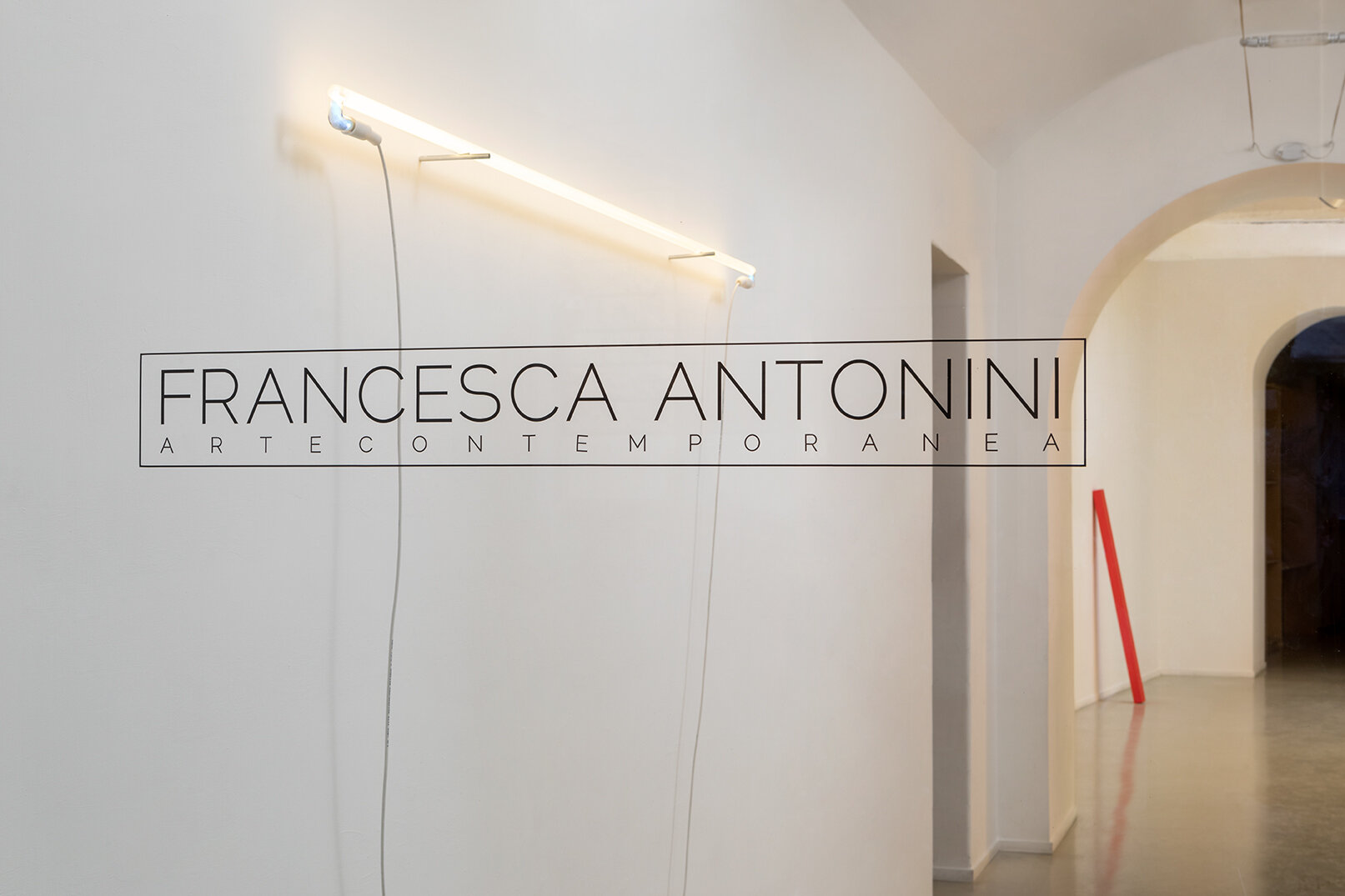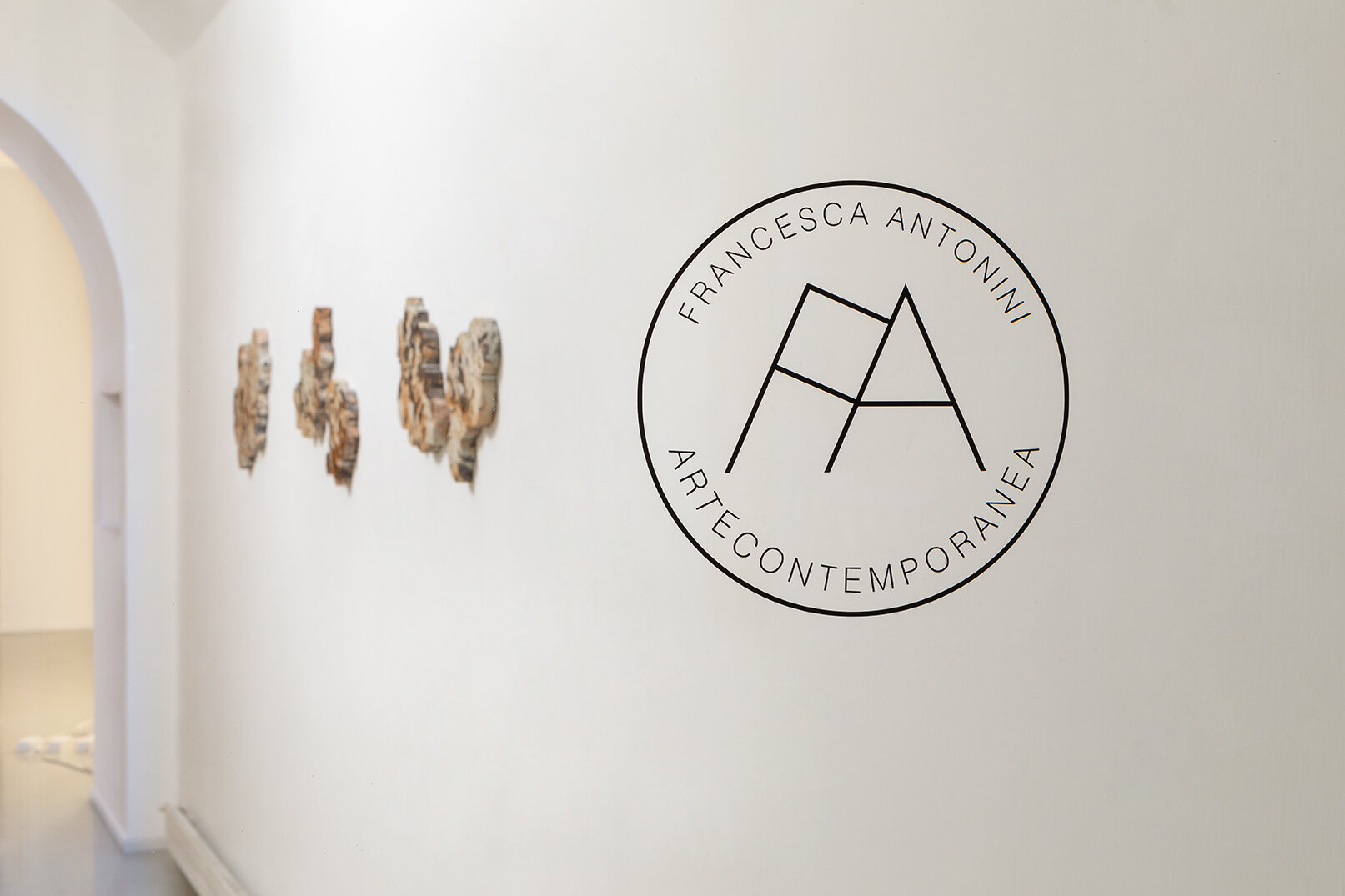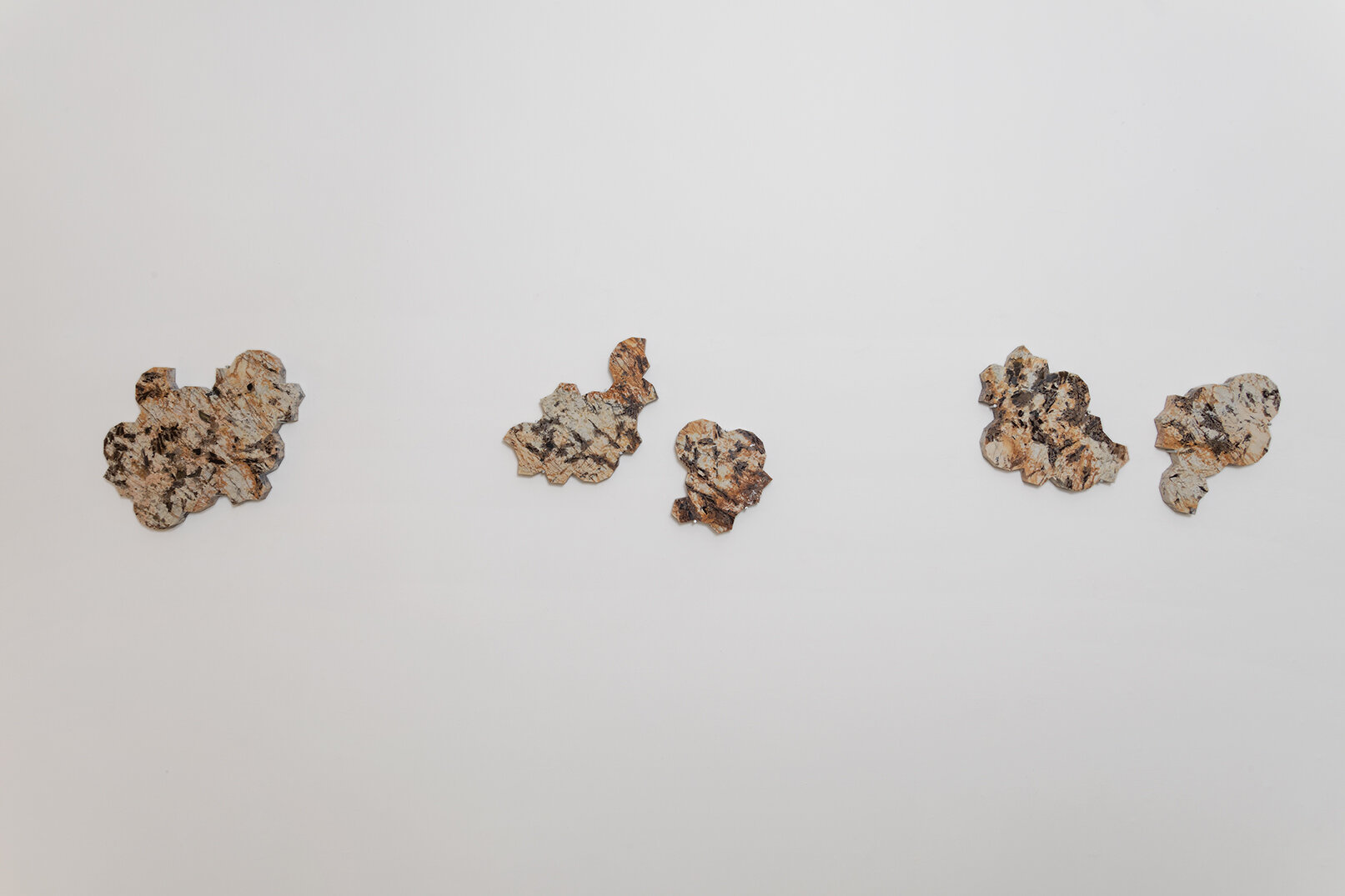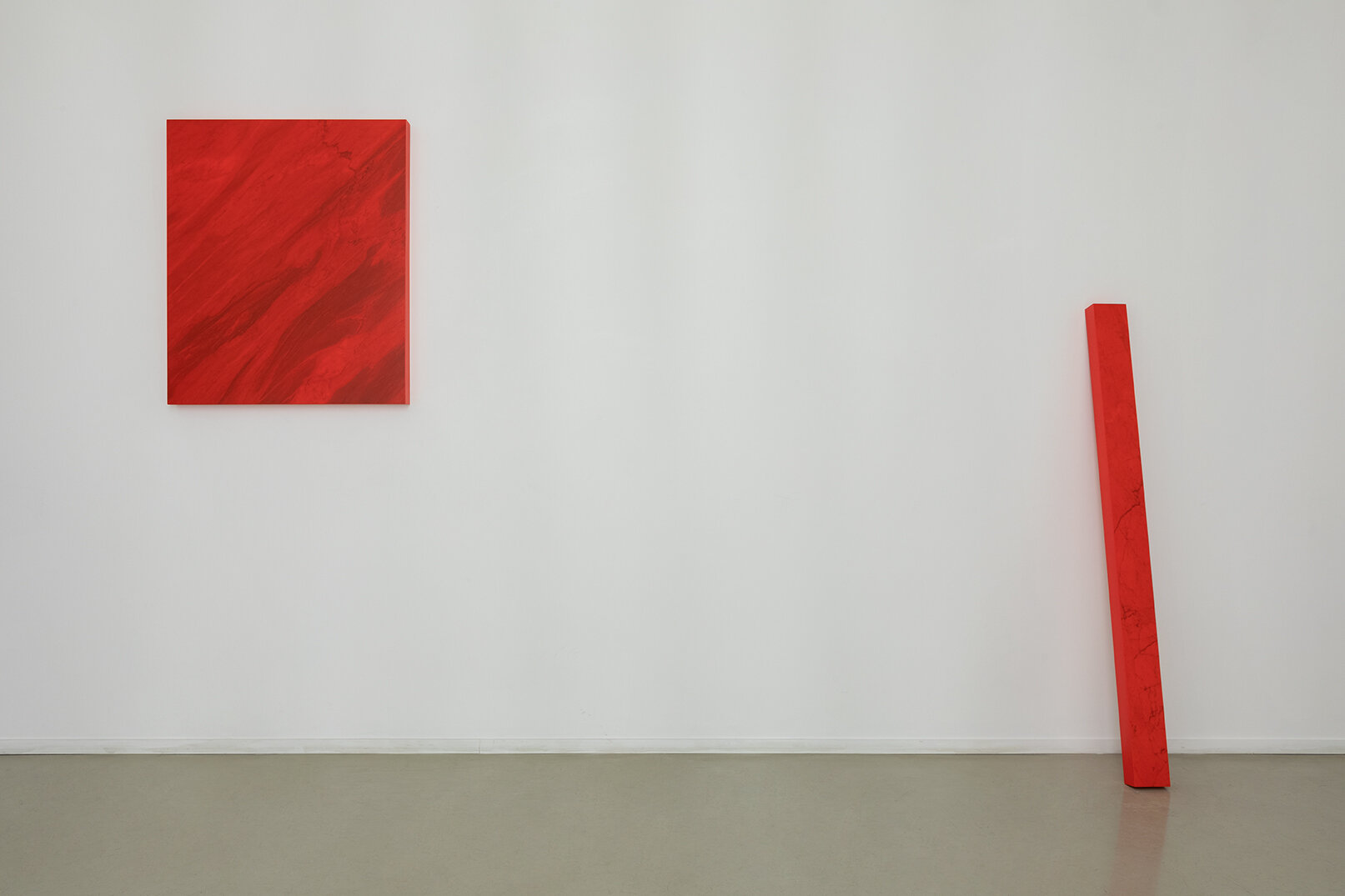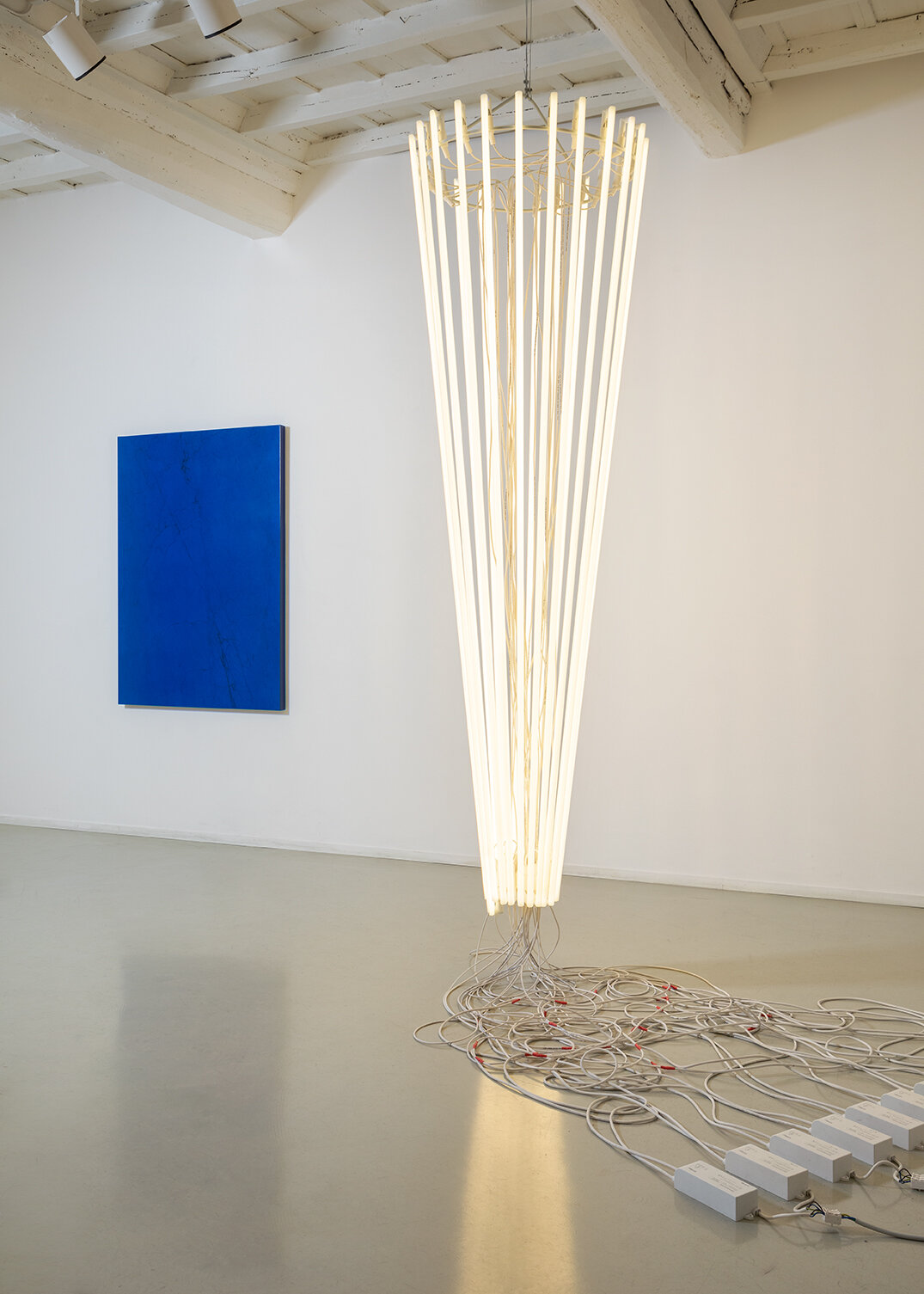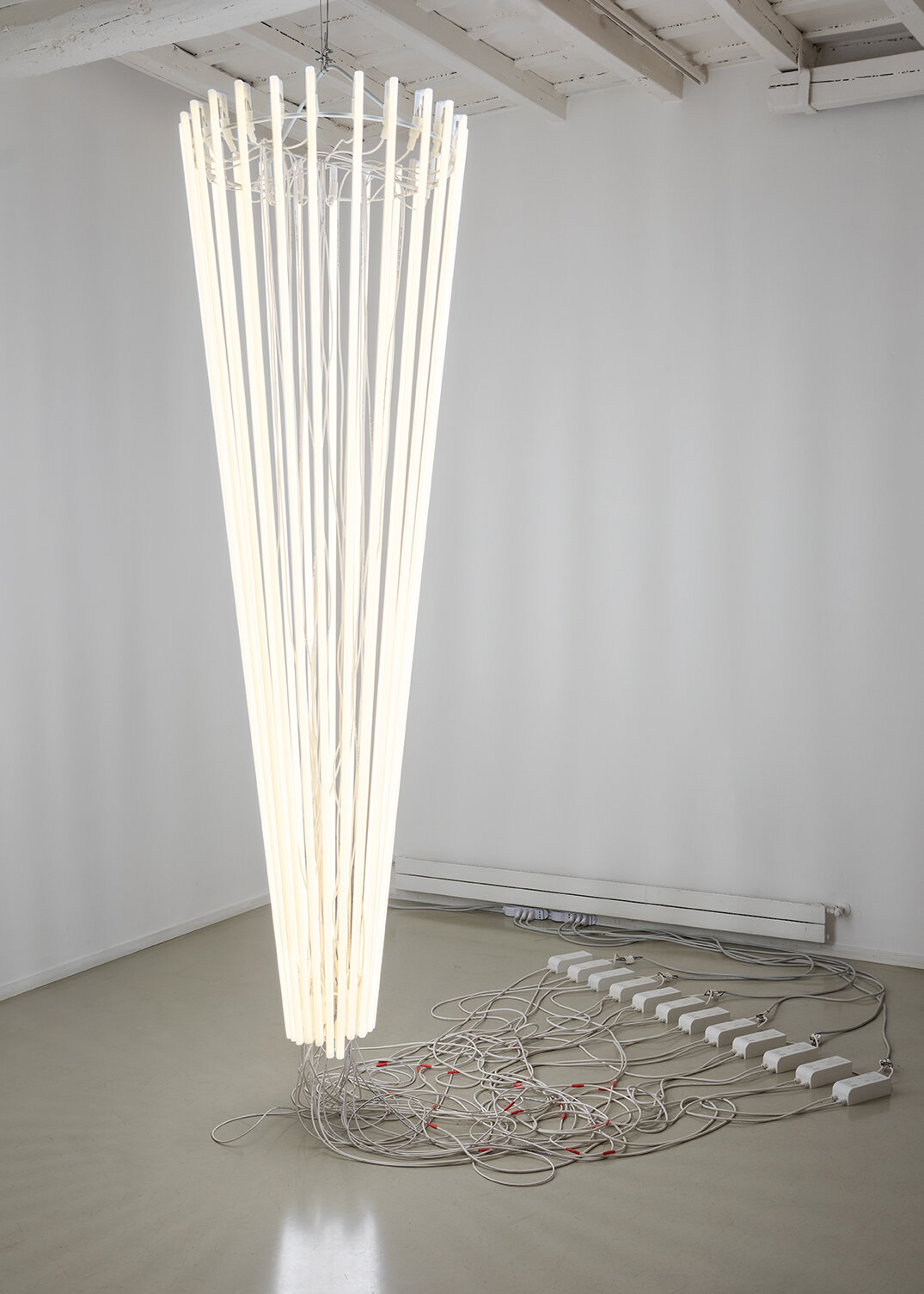4.500 GRADI KELVIN
SIMONE CAMETTI
OPENING Wednesday MARCH 4TH
UNTIL JULY 24TH, 2020
Bright possibilities
LORENZO BALBI
The starting point of Simone Cametti's artistic projects (Rome, 1982. He lives and works in Rome) is exploration. It can be a real exploratory expedition in search of natural places - such as those conducted in the Abruzzo mountains from which it comes - or of abusively entering construction sites under construction - such as that of a Roman hotel where he lived and worked for some months - or an investigation into the materials, their unexpressed possibilities, on the landscapes they unknowingly preserve. The direct exploration of these places brings Cametti to a new awareness of the context, an experience of knowledge and a screening of expressive possibilities on which to conceive his own action. The laws of physics, the relationship between natural and artificial, the limits and virtues of the materials used are the environment in which the artist moves and where he begins his projects / processes of materialization of the suggestions derived from the experience in environment and with the environment that surrounds it.
The exhibition, his third in the gallery, takes its title from the unit of measurement of the light temperature ideally closest to natural light: 4,500 degrees Kelvin. A totally artificial and approximate paradigm that tries to define and regulate what is most natural and vivifying, the light of the sun.
All the exhibition is illuminated by the artist's works in an attempt to manipulate and reaffirm the naturalness of the light element.
In particular, a blatantly industrial and linear neon was filled with helium, the gas that powers (and gives its name) to the sun, summarizing Cametti's artistic research in its simplest and most effective form, while a large installation of neon found in an abandoned building site completely illuminates the large central room, providing light and giving readability to all the works in the exhibition. It is a lamp and a sculpture at the same time, a luxury design element and an accumulation of illegitimately appropriated objects, a functional light source for the exhibition and an illuminating sculptural find. In a way, we are in the presence of a performative sculpture just as Cametti intended his luminous installations in the past: both in a room of a hotel under construction on the suburb of Rome, and on the trunk of a fir tree fallen in the Vaia wood. Also in these cases, as today, the artist has made sculptures-installations in neon tubes and then fortunately connect them to electrical systems conceived by him as complex networks of wires, connections and relationships/reactions (in this case deliberately left visible) then turn them on.
The lighting is only a phase of the constitutive process of the work that can decree a stage of completion - as in this case - or it can arouse new results - videos, photographs - as in previous research. The processual approach to the work, the continuous search for any new, different and more interesting outcomes, is the founding characteristic of Cametti's curiosity and his approach to artistic creation: his works appear to us in a state of stasis and together with possibilities for future development and experimentation. A way of acting quite similar to scientific investigation procedures, in continuous and profound evolution. In this sense the Carrara marble works appear as a landing place and further synthesis of his speech: precious slabs of the marble most used in sculpture are painted by the artist with paints and car-body methods with the blue of ultraviolet and the red of infrared: chromatic extremes of the field of view of the human eye and perceptual possibilities. Painting is hiding but also adding value, accumulating material and giving new light to the original material, highlighting the veins, the preciousness, the hidden landscapes.
The works on show come as a development of a reflection on marble materials and their possibilities that Cametti has been carrying on for some time, acting on surfaces with paints and limiting and circumscribing their spaces, vision and perception. A process of camouflage and reveling, censorship and highlighting at the same time. The works obtained through this long and complex procedure, viewable on show, immediately lead us to reflections and references to the history of art: from the volumes of American minimalism to the research of poor art, from the Arab Mudejar style to the colors of contemporary design. A particular work takes on a further "active" connotation: it is the complex puzzle of Splendid Gold granite slabs created by the artist following the lines and angles of the quartz crystals that make it up: hexagons and dodecahedrons. The "pieces" so obtained are hung on the wall to form a potentially different composition in every place and situation, which can be modified and altered at will, sculpture/image but also a free process of creation and development: an area of infinite and bright possibilities.
PRESS REVIEW: ARTRIBUNE, SEGNONLINE
